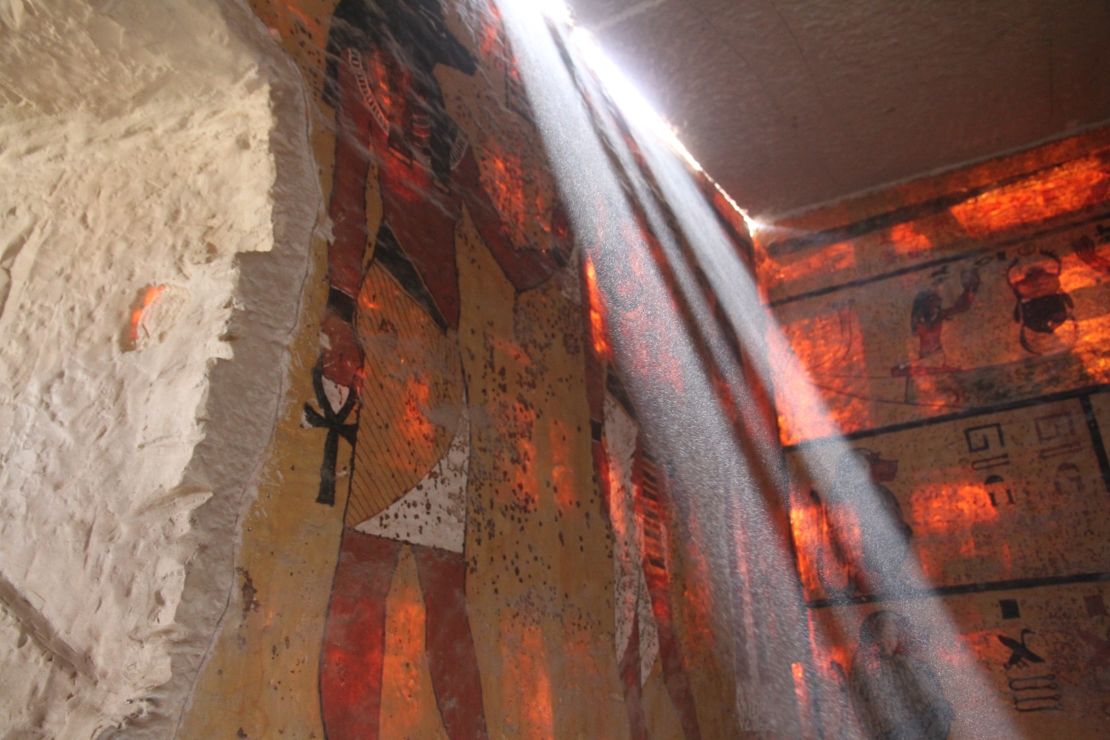Story highlights
The replica of King Tutankhamun's tomb in Luxor, Egypt, took four years to construct and install
Moisture from the breath of decades of visitors has caused the deterioration of original tomb
The replica was constructed by a Madrid-based team who are working to recreate other Egyptian tombs
It’s not quite the Mummy Returns – more like an attempt to stop the Mummy disappearing in the first place.
Archeological experts have built an exact, full-sized replica of King Tutankhamun’s tomb in Egypt, recreating every tiny detail to save the original from being destroyed by visitors.
The replica tomb opened this week near the southern Egyptian city of Luxor, where tourists flock to see the ancient Valley of the Kings complex that houses the young pharaoh’s actual resting place.
Laser scanners and high definition printers were used to recreate the precise textures and colors of wall murals depicting the afterlife.
King Tutankhamun’s original tomb, built following the 19-year-old ruler’s death in 1327 B.C., was discovered almost intact by archaeologist Howard Carter in 1922.
Great fakes: Top tourism replicas
But decades of tourism have taken their toll.

Moisture from the breath of visitors has damaged the murals and walls, while temperature fluctuations have caused paint to flake off and cracks to expand.
Journey into the afterlife
Luckily, dampness isn’t an issue in the new tomb – some Egyptologists attending an official inauguration reportedly burst into tears when they saw how accurate it was.
The facsimile tomb recreates the paintings – which depict the young pharaoh’s journey into the afterlife – in their existing damaged form from images taken in 2009.
Carved masonry inside the structure, including the sarcophagus in the middle of the burial chamber that once contained King Tut’s mummy, have been recreated using resin.
Both the tombs are currently open to the public, but the plan is eventually to close the original to allow for conservation work.
And, no doubt, offer some peace and quiet to Tutankhamun, whose remains are still there, protected by a glass case.
Social and political turmoil
The new tomb also help safeguard one of the Egypt’s key attractions at a time when social and political turmoil is wreaking heavy damage on its tourism industry, pushing takings down by 43% according to some reports.
Egypt unveils massive restored statues

“Our heritage is something that gives Egypt its unique identity; preserving it through such projects is vitally important,” said Omayma El Husseini, a spokesman for Egypt’s tourism board.
“They also ensure visitors have the opportunity to experience pharaonic sites of significance, allowing them to stay for longer periods to fully appreciate the importance and relevance of such projects.”
The $690,000 replica is the work of Factum Arte, a Madrid-based conservation team also engaged in similar projects to recreate the important tombs of Queen Nefertari and Seti I.
“This remarkable project is a fine example of how new technology can preserve and indeed promote Egypt’s rich archaeological heritage,” James Moran, the European Union’s ambassador to Egypt, said at the ceremony to open the new tomb.
“It should also help to revive much needed tourism in the unique area of Luxor, something that is badly needed for the development of Upper Egypt.”









